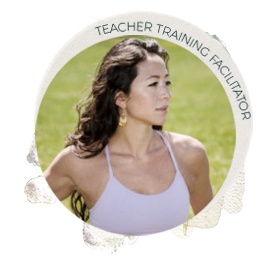As we bid farewell to 2020, we have gained the opportunity to see with clear eyes, the superficial and fragile construct of our systems and how the tiniest atom can shift the trajectory of the world. We have experienced one of the most transformative epochs this Earth has offered our species. From wildfires to floods, from social and racial injustice to a global pandemic; we have borne witness to the consequences of our actions and the interconnectedness of our lives.
After this challenging year, we may be tempted to glorify the habitual symbolism of the clean slate that a New Year typically signifies. We may feel we deserve the opportunity to start anew and in so doing we risk missing out on the wisdom of this ordeal with the undue pressures we may put on ourselves to disconnect from our journey in order to begin a different better one. Immediately, the clock strikes midnight and we have resolutions, plans, tasks, and to-do lists….anxious to discard 2020 and look ahead to a blissfully vaccinated “normal” future.
Think of this past year like a flight you have taken. The start of the journey is filled with expectation, yet the journey itself has been a long ride filled with turbulence, discomfort, cramped seats, airline food – you get the picture…now imagine the pilot has finally announced for flight attendants to prepare for landing. You know that you are almost home and that its time to wake up, store your tray table, turn off electronics, put your shoes on… Now, the plane doesn’t just fall out of the sky and drop you at home, it begins to descend, to drop in altitude and to lower its gear in preparation for landing. In order to land safely, it needs a long and clear runway so it has ample room to slow down. Many steps are needed to get us safely to our gate. Precisely because of this arduous journey, we must give ourselves a generous runway with which to land. Decelerating may be the most difficult part of this odyssey.
As in the allegory of the Hero’s Journey[i] – represented in the Bhagavad Gita, the Odyssey, Star Wars, and countless folklore is this collective individual and cosmic quest we find ourselves on. The role the hero plays is the universal cycle of growth, dissolution, and redemption. By knowing the myth we reconcile ourselves to the immutable truth of existence, that which is OṂ. “I am the Ātman in the heart of all creatures, I am their beginning, their middle and also their end” (BG 10.20)
AUM refers to the states of consciousness[ii]. The cosmic cycle pulses forth into manifestation and back into the unmanifest amidst the silence of the unknown. Within the experience of each posture, lies the entire hero’s journey as well. Each asana contains the A – the beginning; U-the sustaining aspect; and the M – the resolve. Do you struggle with staying conscious in transition when moving out of something? Are you thinking ahead to what is next or back to what just happened? OṂ (the joining of the vowels in Sanskrit) is like the breath that links one posture to the next in the asana practice. We move gracefully in vinyasa from one form to another in order to experience this cycle. As is the cyclical experience of every living being, so too is this cyclical emanation and dissolution in the living cosmos… ”the world in a grain of sand”[iii]. The sound of OṂ (A+U+M+silence) and its cosmic resonance is known as Śabda Brahman. Reflected in savāsana lies the grace that reveals itself only when we allow for “un-doing”. Yogis know that we cannot “do” enlightenment, it is our practice to go through the steps to be receptive to it.
We are on our journey home. As eager as we may be to turn the page, we are embarking on our return from the depths of a dark voyage. We are in the midst of our awakening, beginning the end, ending the middle – and this portion of our journey itself contains within it too, the beginning the middle and the end, the pranava – the humming of all life. OṂ – is the sacred mantra of all existence within which lies the understanding of creation, existence, and change. Let us lay fallow so when the seeds are ready to be sewn, we are able to nurture the wisdom, patience, and compassion of our internment. As we welcome the new year may we recognize the manifestation of God in each moment that has ever existed. Be patient, be gentle, be generous, allow this new year to represent the simple resolution to keep going. Allow a long runway…it takes time and space to slow down to make our journey hOMe.
Wishing you a full and joyful New Year.
[i]Joseph Campbell “The Hero with A Thousand Faces”
[ii] Jivamukti Yoga – Practices for liberating body and soul. By Sharon Gannon and David Life. p. 34. See illustration: waking (jagrat), dream (swapna) deep sleep (sushupti) and turiya (the stateless state)
[iii]Auguries of Innocence, William Blake

